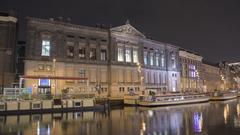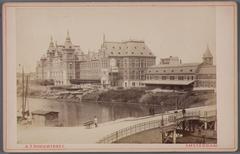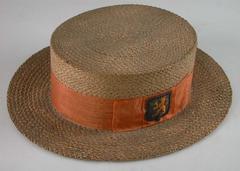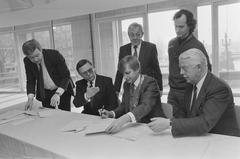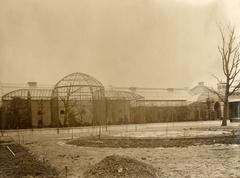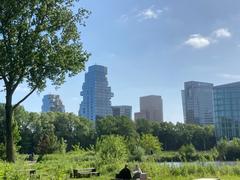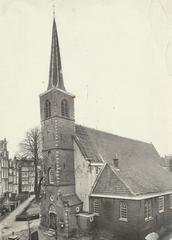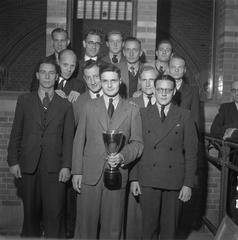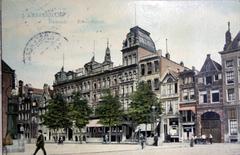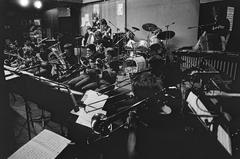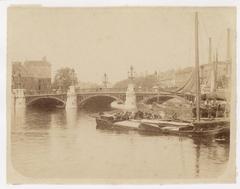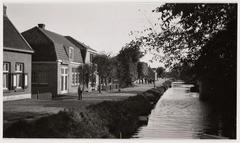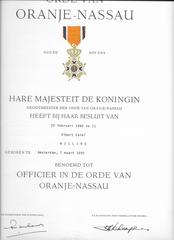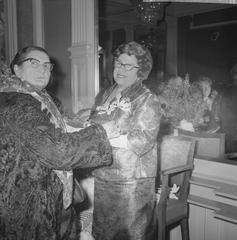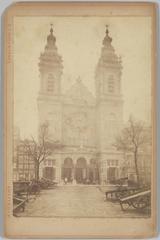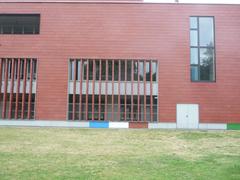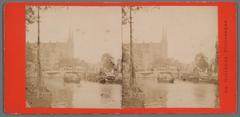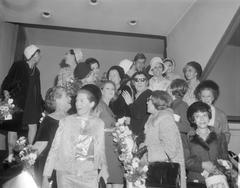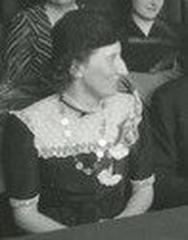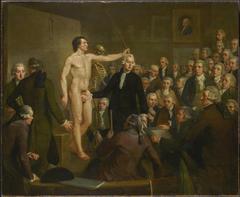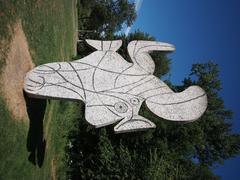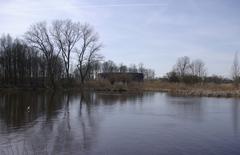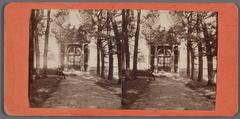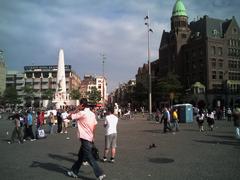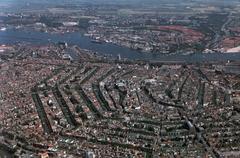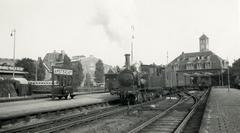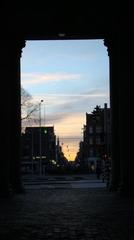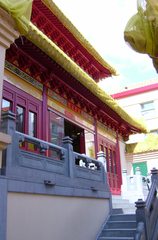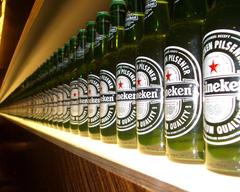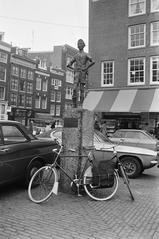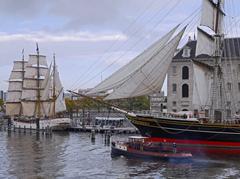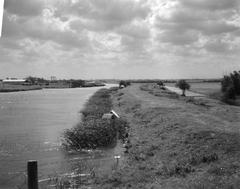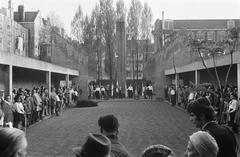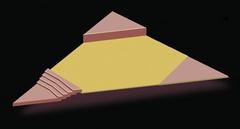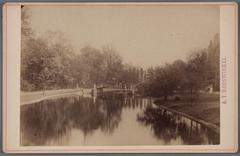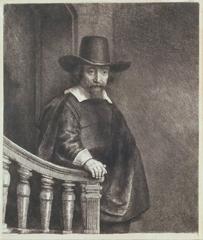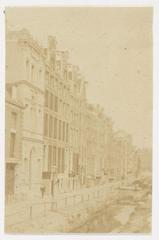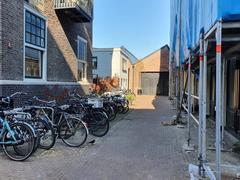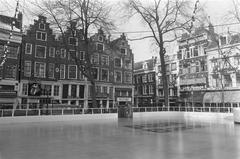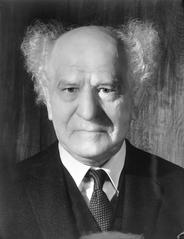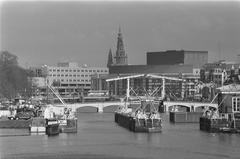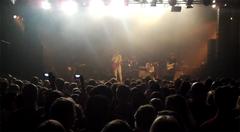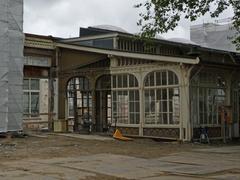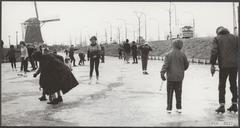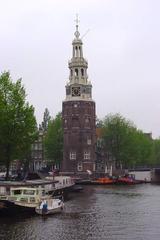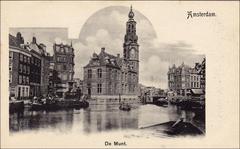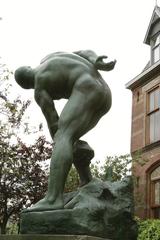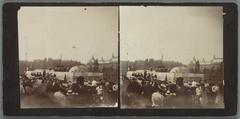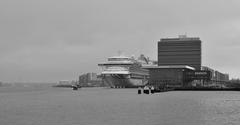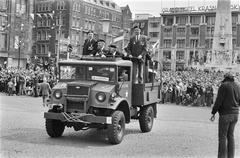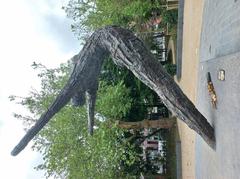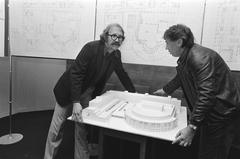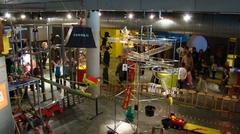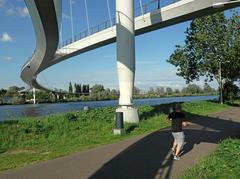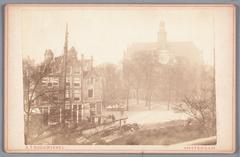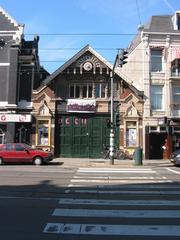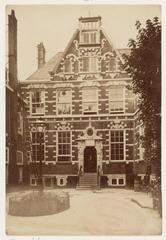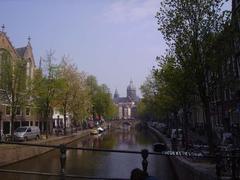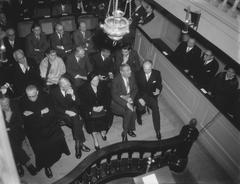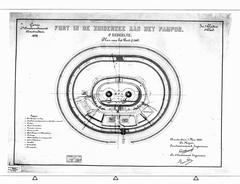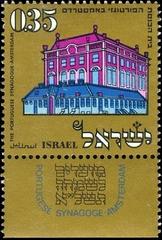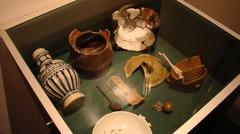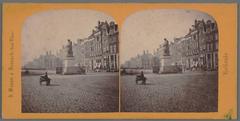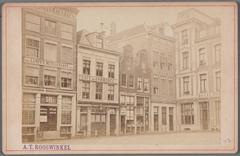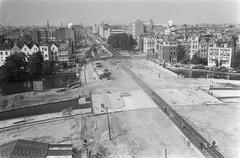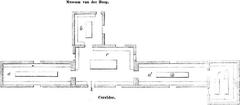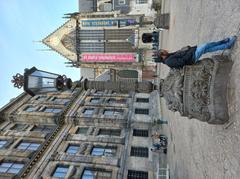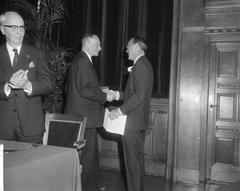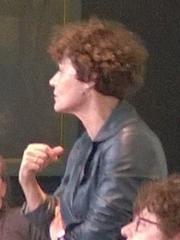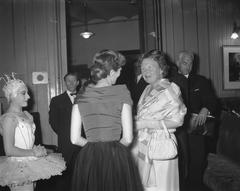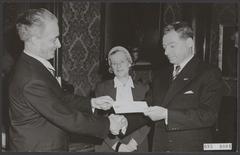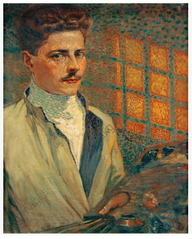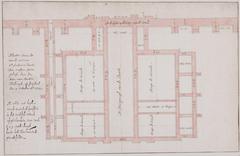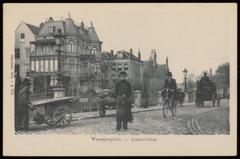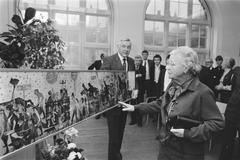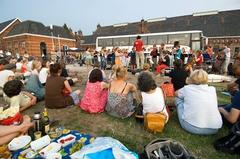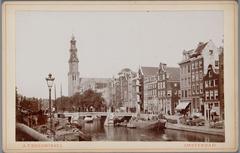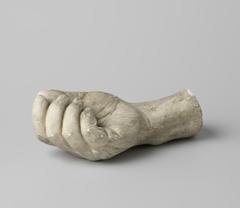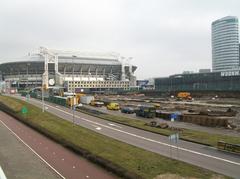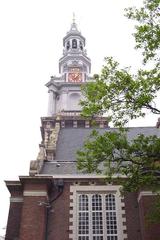Gedenkteken Joodse Musici Amsterdam: Visiting Hours, Tickets, and Historical Significance
Date: 14/06/2025
Introduction
The Gedenkteken Joodse Musici (Memorial to Jewish Musicians) in Amsterdam is a solemn and evocative tribute to the Jewish musicians who played an integral role in the city’s musical heritage before being silenced during the Nazi occupation in World War II. Situated near the iconic Concertgebouw and within the historic Jewish Cultural Quarter, the memorial serves as a poignant reminder of both tremendous cultural loss and enduring resilience.
Whether you are a history enthusiast, music lover, or cultural traveler, this comprehensive guide will help you engage meaningfully with Amsterdam’s Jewish musical legacy. Here, you’ll find details on the memorial’s history, design, practical visiting information, accessibility, and tips for exploring nearby attractions.
For further resources and updates, consult the Concertgebouw official site, the Jewish Virtual Library, and the Jewish Cultural Quarter.
Historical Background
Jewish Life and Musical Heritage in Amsterdam
Prior to World War II, Amsterdam was home to a vibrant Jewish community, numbering over 100,000 by 1940. Jewish musicians were central figures in the city’s orchestras and ensembles, especially the world-renowned Royal Concertgebouw Orchestra. Works by composers such as Gustav Mahler and Felix Mendelssohn were frequently performed, reflecting the deep interconnection between Jewish culture and Amsterdam’s musical scene (JGuide Europe).
Nazi Occupation and Exclusion
With the Nazi occupation in 1940, Jewish musicians faced swift and systematic exclusion from public life. Anti-Jewish laws resulted in the banning of works by Jewish composers and the forced dismissal, in 1941 and 1942, of seventeen Jewish members of the Concertgebouw Orchestra (Concertgebouw). Many of these musicians were subsequently deported, and only a few survived the Holocaust.
Postwar Memory and Commemoration
In the decades following the war, the suffering and contributions of Jewish musicians were often overlooked. Over time, however, growing recognition led to the creation of the Gedenkteken Joodse Musici as a space for remembrance and education, ensuring that the stories and artistry of these musicians are not forgotten (Jewish Virtual Library).
The Memorial: Location, Design, and Symbolism
Location
The Gedenkteken Joodse Musici is located within the Royal Concertgebouw building at Van Baerlestraat 5, as well as in Wertheimpark within the Plantage neighborhood. Both locations are significant: the Concertgebouw was the professional home of the musicians commemorated, while Wertheimpark is a central site for Holocaust remembrance in Amsterdam (Concertgebouw).
Design and Artistic Features
The memorial, designed by Evelyne Merkx and René Knip, features calligraphic inscriptions of the seventeen musicians’ names and musical motifs, such as notes and instrument references, restoring individuality and dignity to those lost. The thoughtful design invites quiet reflection and connects emotionally with visitors (Concertgebouw).
Visiting the Gedenkteken Joodse Musici
Hours and Admission
- Concertgebouw Memorial: Accessible during opening hours, typically 10:00 AM–6:00 PM on weekdays and during concert events. Confirm current hours at the official website.
- Wertheimpark Memorial: Open year-round, generally from dawn until dusk (approx. 6:00 AM–10:00 PM, depending on season).
- Admission: Both memorials are free to visit.
Accessibility
- Concertgebouw: Wheelchair accessible, with elevators and ramps.
- Wertheimpark: Paved paths and gentle gradients suitable for wheelchairs and strollers.
- Public Transport: Trams 2, 3, 5, 12, and 14 stop near both locations. Information on accessible public transport is available via I amsterdam.
Getting There
- Concertgebouw: Easily reached by tram (lines 3, 5, 12) to Concertgebouw/Van Baerlestraat.
- Wertheimpark: Accessible via trams 9 and 14 (Plantage Kerklaan or Mr. Visserplein stops).
- By bike: Amsterdam’s cycling infrastructure provides direct access, and ample bike parking is available.
Guided Tours and Educational Programs
- Guided Tours: The memorial is featured in guided tours offered by the Concertgebouw and Jewish Cultural Quarter. These tours often include the Jewish Historical Museum and Portuguese Synagogue (Jewish Cultural Quarter).
- Educational Resources: Informational panels and digital resources (including podcasts and the Audiala app) are available for deeper insight (NPO Klassiek).
Photography and Visitor Etiquette
- Photography: Permitted, but visitors are encouraged to be discreet and respectful, especially during commemorative events.
- Etiquette: Visitors should speak quietly, avoid disruptive behavior near the memorial, and follow any guidance during ceremonies.
Atmosphere and Visitor Experience
The Gedenkteken Joodse Musici offers a space for contemplation and remembrance. Its evocative design and serene settings—within the grandeur of the Concertgebouw or the greenery of Wertheimpark—invite visitors to reflect on the lives and artistry of those commemorated. The proximity to other memorials, such as the Auschwitz Monument in Wertheimpark, amplifies the memorial’s emotional impact.
Nearby Attractions
Enhance your visit by exploring these nearby sites:
- Jewish Historical Museum: In-depth exhibitions on Jewish life and culture.
- Portuguese Synagogue: A 17th-century architectural gem.
- Hortus Botanicus: One of the world’s oldest botanical gardens.
- Museumplein: Home to the Rijksmuseum, Van Gogh Museum, and Stedelijk Museum.
- Hermitage Amsterdam: Rotating art exhibitions in a historic setting.
Best Times to Visit
- Spring and Early Summer (April–June): Pleasant weather and blooming parks.
- Weekday Mornings: Quieter and more contemplative.
- Commemoration Dates: Holocaust Remembrance Day (27 January) and National Remembrance of the Dead (4 May) feature ceremonies and special events (Amsterdam Tips).
Practical Tips
- Duration: Plan 20–40 minutes for the memorial; longer if reading inscriptions or attending events.
- Facilities: Benches and shaded areas in Wertheimpark; restrooms available at nearby museums or cafés.
- Weather: Bring a rain jacket or umbrella; wear comfortable shoes.
- Safety: The park and Concertgebouw are safe during the day; as in all urban areas, keep personal belongings secure.
- Food/Drink: Eating is allowed in the park, but avoid picnicking directly at the memorial.
Accessibility for All
Amsterdam is committed to accessible tourism. Both the Concertgebouw and Wertheimpark feature accessible routes and facilities. For additional support, consult the Jewish Cultural Quarter or city accessibility services before your visit.
Respectful Conduct
- Speak softly and behave respectfully.
- Avoid climbing or touching the monument.
- Follow organizers’ instructions during ceremonies.
Language and Information
Some signage is in Dutch; English translations are increasingly available. Consider a translation app or a guided tour for deeper understanding.
Sustainability
- Use public transport, cycle, or walk.
- Dispose of litter responsibly.
- Support local businesses and museums.
Frequently Asked Questions (FAQ)
Q: What are the visiting hours?
A: Concertgebouw memorial: 10:00 AM–6:00 PM; Wertheimpark memorial: dawn to dusk.
Q: Is there an entrance fee?
A: No, both memorials are free.
Q: Are guided tours available?
A: Yes, via the Concertgebouw and Jewish Cultural Quarter.
Q: Is the memorial accessible for visitors with disabilities?
A: Yes, both sites are wheelchair accessible.
Q: Can I take photographs?
A: Yes, but be respectful of the site and others.
Visuals and Interactive Elements
Consider including high-quality images of the memorial with descriptive alt text (e.g., “Gedenkteken Joodse Musici memorial in Amsterdam’s Wertheimpark, featuring inscribed names and musical motifs”). Interactive maps and digital audio guides are available via the Audiala app and official websites.
Conclusion
The Gedenkteken Joodse Musici stands as a powerful symbol of remembrance, resilience, and the enduring importance of artistic freedom. By visiting, you honor the memory of Jewish musicians whose contributions shaped Amsterdam’s cultural life and whose legacies continue to inspire. Combine your visit with nearby Jewish heritage sites and participate in guided tours or commemorative events for a richer understanding of Amsterdam’s history.
To enhance your experience, use digital resources such as the Audiala app and stay connected with cultural organizations for event updates. For more information on accessibility and planning, refer to I amsterdam’s accessibility guide and the Jewish Cultural Quarter.
Summary of Key Points
- The memorial commemorates Jewish musicians persecuted during WWII and is located at the Concertgebouw and in Wertheimpark.
- Both sites are free, accessible, and open year-round (subject to opening hours).
- Guided tours, educational resources, and commemorative events are available.
- The memorial is integrated into the broader Jewish Cultural Quarter, rich with historical and cultural attractions.
- Photography is permitted, but visitors should remain respectful.
- Accessibility and sustainability are priorities for both the city and the memorial sites.
Sources and Further Reading
- Concertgebouw official site
- JGuide Europe Amsterdam
- Jewish Virtual Library on Amsterdam
- NPO Klassiek – Gedenkteken voor Joodse Musici
- Concertgebouw – Artistic Features
- Jewish Cultural Quarter
- I amsterdam – Accessibility
- Dutch Auschwitz Committee
- Amsterdam Tips – What’s On
